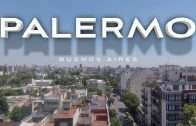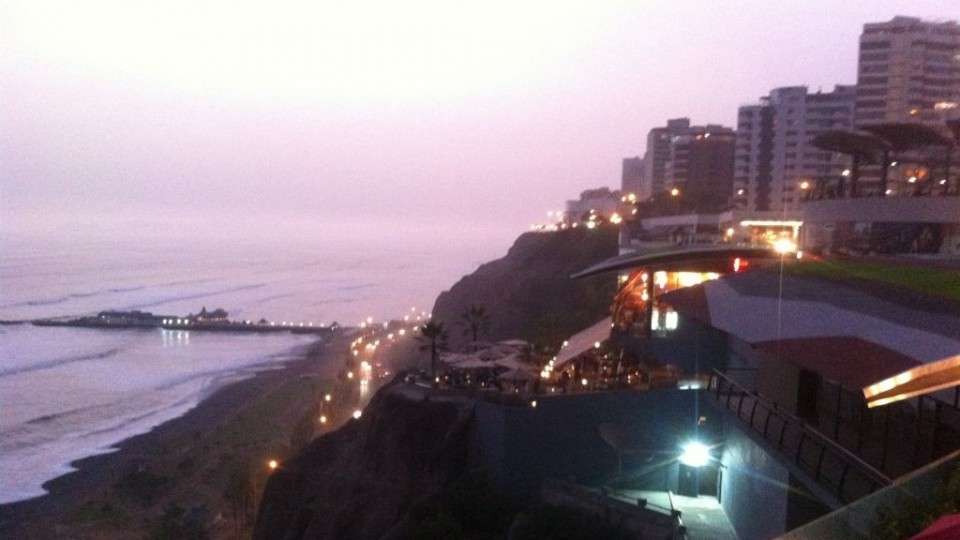Montevideo – Capital of Uruguay
The southernmost capital city in South America, Montevideo is also the capital city of Uruguay, situated on the east bank of the Rio de la Plata.
Montevideo hosted all the matches during the first FIFA World Cup and has consistently been rated as having the highest quality of life of any city in Latin America.
Founded in 1724, for much of its early history, the city consisted of what is now known as the Ciudad Vieja (Old Town). By the mid-19th century the city began to grow eastward towards what is now known as Centro. The demolition of the old fort that used to mark the eastern boundary of Old Town enabled the construction of what is now Plaza Independencia. Eventually Boulevard Artigas was built around Centro, but by 1910, suburbs were already developing beyond it which were later annexed into the growing city.
Montevideo is a relatively safe place. The city is built on a slight hill, the spine of which extends into the Rio de la Plata to create the point that was the original city (Ciudad Vieja). From the Plaza de la Independencia, the main street that extends east from the plaza is 18 de Julio Ave. El Centro (downtown) is in this area and there are lots of shops. You can walk around without worry almost anywhere, and there are lots of side streets and areas you can explore: be aware that the port area, just off the main tourist and port terminal areas, is considered dangerous by locals as much as by the police. Parts of the city may appear run-down, but do not confuse this with it being a bad neighbourhood. Along with Buenos Aires, this is one of the few cities in South America where poverty is not overly prevalent. That being said, there is simply not enough money in Uruguay to construct lots of new, modern buildings, so buildings are kept in use for long periods of time.
Montevideo is not a large city, and many of the sites can be seen in several days as they are clustered together.
Ciudad Vieja (Old City) was the earliest part of the city to be developed and today it constitutes a prominent barrio of southwest Montevideo. It contains many colonial buildings and national heritage sites, but also many banks, administrative offices, museums, art galleries, cultural institutions, restaurants and night-clubs, making it vibrant with life. Its northern coast is the main port of Uruguay, one of the few deep-draft ports in the Southern Cone of South America.
Montevideo‘s most important plaza is Plaza Independencia, located between Ciudad Vieja and downtown. It starts with the Gateway of The Citadel at one end and ends at the beginning of 18 de Julio Avenue. It is the remaining part of the wall that surrounded the oldest part of the city. Several notable buildings are located here.
The Solís Theatre is Uruguay‘s oldest theatre. It was built in 1856 and is currently owned by the government of Montevideo. In 1998, the government of started a major reconstruction of the theatre, which included two US$110,000 columns designed by Philippe Starck. The reconstruction was completed in 2004, and the theatre reopened in August of that year. The plaza is also the site of the offices of the President of Uruguay (both the Estévez Palace and the Executive Tower). The Artigas Mausoleum is located at the centre of the plaza. Statues include that of José Gervasio Artigas, hero of Uruguay‘s independence movement; an honour guard keeps vigil at the Mausoleum. This large monument in the Plaza de Independencia pays tribute to José Gervasio Artigas, one of the heroes of the Uruguayan Independence. Under the monument is the mausoleum. It contains an urn with his ashes and two honour guards keeping watch.
Palacio Salvo, at the intersection of 18 de Julio Avenue and Plaza Independencia, was designed by the architect Mario Palanti and completed in 1925. Palanti, an Italian immigrant living in Buenos Aires, used a similar design for his Palacio Barolo in Buenos Aires, Argentina. Palacio Salvo stands 100 metres (330 ft) high, including its antenna. It is built on the former site of the Confitería La Giralda, renowned for being where Gerardo Matos Rodríguez wrote his tango “La Cumparsita” (1917.) Palacio Salvo was originally intended to function as a hotel but is now a mixture of offices and private residences.
Also of major note in Ciudad Vieja is the Plaza de la Constitución (or Plaza Matriz). During the first decades of Uruguayan independence this square was the main hub of city life. On the square are the Cabildo—the seat of colonial government—and the Montevideo Metropolitan Cathedral. The cathedral is the burial place of Fructuoso Rivera, Juan Antonio Lavalleja and Venancio Flores. Another notable square is Plaza Zabala with the equestrian statue of Bruno Mauricio de Zabala. On its south side, Palacio Taranco, once residence of the Ortiz Taranco brothers, is now the Museum of Decorative Arts. A few blocks northwest of Plaza Zabala is the Mercado del Puerto, another major tourist destination.
The sexual diversity monument, erected in 2005, is located on Policia Vieja St., between Plaza de la Constitución and Plaza Independencia. It reads “Honouring diversity is honouring life; Montevideo is for the respect of all identities and sexual orientations”. It’s South America’s first monument dedicated to sexual diversity. Other places of interest to gay people include the Edificio Liberaij, where two gay Argentine bank robbers (featured in the 1998 movie Plata Quemada) died in 1965.
Palacio Legislativo – national parliament, the first one in South America and an iconic symbol of Uruguay´s long-lasting democracy.
Mercado del Puerto – this is a covered market full of restaurants and some shops selling handicrafts. The main market is open every day during lunch hours. The restaurants around the exterior offer both indoor and outdoor seating and they remain open for dinner.
Nacional – not only the name of the world-famous football team but also the stadium where the first game of the first World Cup Uruguay 1930 was played.
Punta Carretas – a shopping centre located in a former prison
Parque Rodo – Montevideo’s main park with numerous amusement facilities
The Rambla — This waterside roadway has people biking, fishing, drinking mate, and enjoying the great views. 22 kilometres-long (13.6 miles), the Rambla goes along Montevideo’s waterfront. Lovely at sunset.
La Feria Tristán Narvaja Flea Market — Spend part of Sunday morning with the locals on Tristán Narvaja Street, where vendors sell everything from t-shirts to antiques to kitchen supplies. It’s right off of 18 de Julio Ave. and the entrance is often marked by people selling puppies.
Pocitos — This barrio lies about 2 miles south-east of El Centro. The Pocitos beach runs east from Punta Trouville for about a mile.






